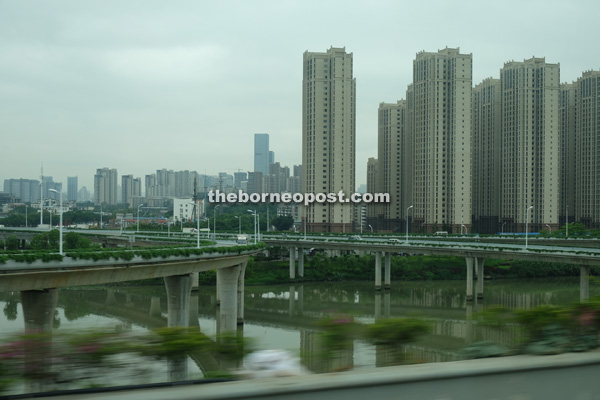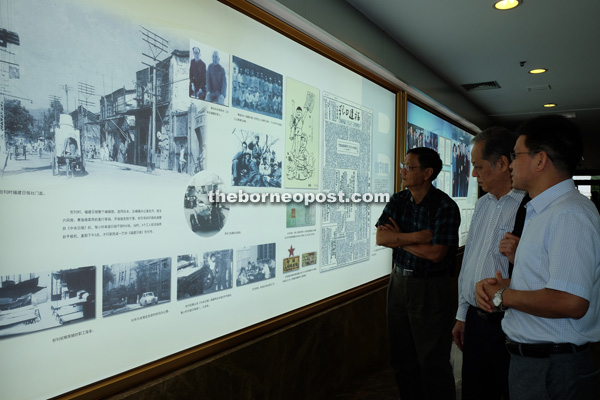
Pan (right) briefs some of us on the history of Fujian Daily.
OUR 12-member media delegation comprising journalists from news organisations in Sarawak on a 16-day tour of China all felt a sense of familiarity when we landed Changle International Airport in Fuzhou city in Fujian province on….
All of us were Malaysian Chinese whose ancestors migrated from the Fujian province and the first thing that struck us was the familiar Foochow and Hokkien dialects spoken at the airport besides the official Mandarin.
Although, the accent of Foochow and Hokkien (known as Mina) dialects spoken in Fuzhou was different from those we speak in Sarawak, we understood the basic words.
Later we were to find more similarities in some of the local food in Fuzhou and since it is summer the weather is similar to what have in Sarawak.
Our tour guide Chen Guangying was almost apologetic when she explained that Fuzhou despite being the capital was not as well known the bigger city of Xiamen in the Fujian province.
Perhaps she was comparing Fuzhou with other bigger cities in China but with an area of over 10,000 sq km and a population of over seven million Fuzhou is by no means a small city.
It took an hour long bus ride to get from Changle International Airport to the city centre and we saw the familiar sight skyscrapers apartments almost everywhere as soon as we went past the city’s highway flyovers.
What Fuzhou lacked in development compared to Xiamen it makes up with its rich history and it is fast catching up with the dizzying pace of development in the other major cities of China.
A subway is being constructed in the city and soon Fuzhou will be connected by subway making it the only other city subway services besides Xiamen in Fujian province.
Fujian province, which has a total area of over 120,000 sq km, is more or less the size of Sarawak. However, Fujian’s population (30 million) is 10 times more than that of Sarawak.
Fuzhou like other cities in Fujian is hilly as despite the vast land mass, only 10 per cent of the province is flat land suitable for building and development.
To reach the city centre we had to cross the Min River which starts and ends within the province and is the longest river in Fujian making it a vital water transport channel for trade.
Fuzhou’s affinity with Sarawak was enhanced some years back when it signed sister pact with Sibu where the majority of the Chinese trace their roots to the city and its surrounding area.
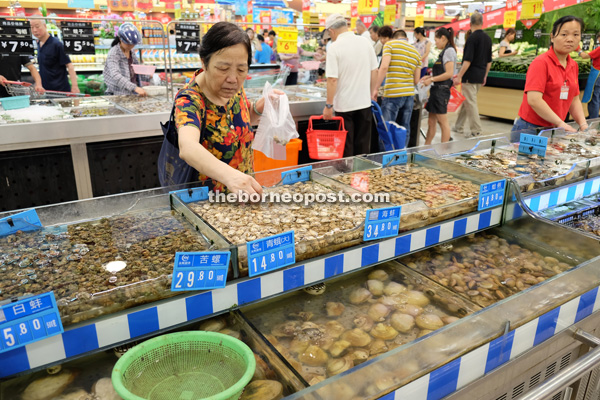
A woman is seen picking shells at Yong Hui General Merchandise Supermarket.
Yong Hui General Merchandise Supermarket (GMS)
One of the best ways to get to know a place is to go to its market place and the best location is Yong Hui GMS the most established supermarket in Fuzhou.
When we visited the two-storey complex we found it lived up to its name General Merchandise because its goods range from live frogs, fresh vegetables and fruits to clothing and travelling bags.
The fresh products sections made us felt very much at home with its array of familiar fish vegetables and fruits including the King itself – Durians.
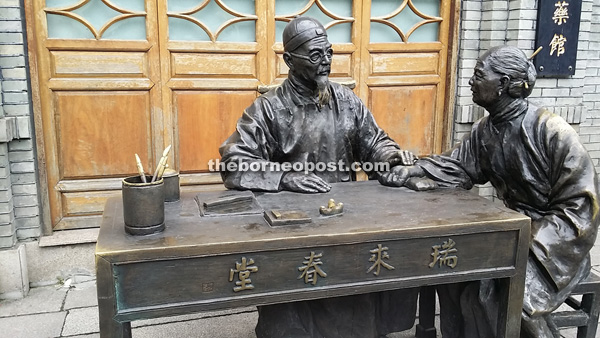
Bronze statues at the street of Three lanes and Seven alleys of a Chinese doctor listening to the pulse of his patient.
Three Lanes and Seven Alleys (San Fang Qi Xiang)
To feel the soul and vibes of Fuzhou you have to literally go into the heart of the city – its old quarters comprising three lanes and seven alleys.
The San Fang Qi Xiang (Three Lanes and Seven Alley) is a combination of thoroughfares, small museums and living quarters.
The area which covers about 40 hectares has about 150 ancient mansions which are perhaps the finest examples of Ming and Qing dynasty architecture.
It was home to many scholar-bureaucrats and wealthy gentry in the past.
Walking through the streets we were pleasantly surprised to find familiar food such as kampua known as ban mian locally, kom pia, ‘xian-mian’ (chang-shou-mian or misua in Hokkien) and ‘ding-bian-hu’ – mainstays of coffeshops in Sibu being sold at street stalls here.
We tried the kam pua mee and mee sua at one of the street stalls and found they tasted quite similar to what we have in Sarawak.
This dialects spoken, sweltering heat and culinary familiarity made us feel very much at home.
We also visited several historical buildings within the area Two Plum Trees Study Room, Temple of Sea Goddness, Former Residence of Yan Fu, Former Residence of Chen Baoxuan, Former Residence of Wang Qi, Ancestral Temple of Chen Family and Ancestral Temple of Lan Family.
This part of ancient Fuzhou is well preserved and among the host of famous historical figures who lived in San Fang Qi Xiang was Lin Zexu, a Chinese scholar and official of the Qing Dynasty.
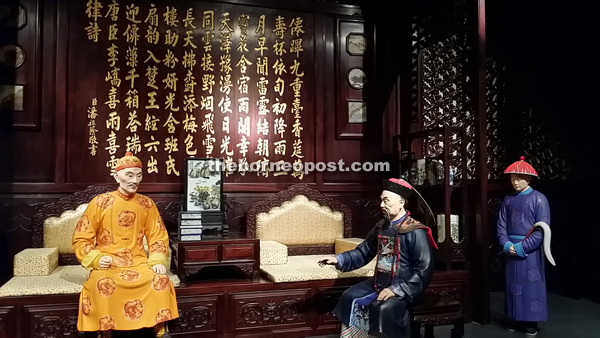
A model showing Lin (centre) paying courtesy call on Guangxu Emperor.
